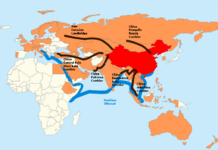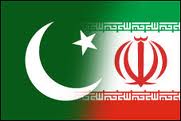 Context
Context
The saga of the Iran-Pakistan Gas Pipeline project is a stark illustration of how geopolitical complexities can impede critical infrastructure development, even when the need is dire. For Pakistan, a country grappling with chronic energy shortages, this pipeline has long represented a beacon of hope for economic stability and growth. Yet, for decades, it has remained tantalizing out of reach, a victim of international pressures, regional rivalries, and economic challenges.
The story begins in 2010 when Pakistan, facing an escalating energy crisis, signed a landmark deal with Iran to construct a 2,750-kilometer pipeline. Initially valued at $7.5 billion, the project promised to be a game-changer for Pakistan’s energy sector. The potential impact was significant: according to a USIP report, Pakistan’s persistent power crisis was trimming off about 2 percent of the country’s annual domestic product[1]. Furthermore, a World Bank study estimated that power shortages in developing countries like Pakistan could reduce business profitability by up to 40 percent[2]. These figures underscored the critical nature of the project for Pakistan’s economic well-being and future growth prospects.
Economic and Geopolitical Realities
From its inception, the project has been shadowed by the looming threat of U.S. sanctions. Unlike India, which received exemptions for its involvement in Iran’s Chabahar port, or Afghanistan, which was granted allowances for trade through Iran, Pakistan has consistently faced stern warnings from Washington about the consequences of proceeding with the pipeline. This disparity in treatment reflects the complex web of U.S. strategic interests in the region. India is viewed as a potential counterweight to China’s growing influence, while for Afghanistan Chabahar represents and alternative for its dependence on Pakistan. Pakistan, with its complex relationship with the U.S. and close ties to China, finds itself in a less favorable position.
The US policy towards Pakistan, Iran, and India have different ambitions. The situation demonstrates the complexity of international relations, where strict policy adherence often gives way to strategic exceptions based on broader geopolitical goals. The American approach has been criticized for its inconsistency, but from the U.S. perspective, it reflects a nuanced balancing of various strategic interests in the region. Using exceptions and restrictions as tools allows U.S, to influence foreign policy choices of regional players.
The geopolitical landscape has further complicated Pakistan’s position. Historically, tensions between Saudi Arabia and Iran meant that Gulf Cooperation Council (GCC) nations were hesitant to support a project that could increase Iran’s influence and decrease Pakistan’s financial dependence on them. Especially because Iran’s influence in the Middle East has consistently been increasing. China and Iran also signed $400 billion-dollar strategic economic agreement in 2021.
While the Chinese facilitated Saudi-Iran détente reached in 2023 offered a glimmer of hope, it has not significantly altered the dynamics surrounding the pipeline project. This hesitation from traditional allies has left Pakistan in a precarious position, caught between its energy needs and its diplomatic relationships. Moreover, the October 7, 2023, Hamas attack on Israel has further hardened positions against Iran.
Pakistan’s economic instability has added another layer of difficulty. The country’s frequent need for IMF bailouts and its struggle to finance large-scale infrastructure projects have made the pipeline’s completion seem increasingly elusive. As years passed, the project’s costs escalated, and the global political and security environment became even more convoluted, making it more challenging for Pakistan to move forward. In August 2023, Pakistan announced the suspension of the project due to the threat of U.S. sanctions, highlighting the ongoing pressures and uncertainties surrounding the initiative.
The failure of alternative energy projects has exacerbated Pakistan’s predicament. Initiatives like TAPI (Turkmenistan-Afghanistan-Pakistan-India pipeline) and CASA 1000 (Central Asia-South Asia power project) have stalled, often citing security concerns in Afghanistan and Baluchistan. Consequently, Pakistan remains heavily reliant on expensive Independent Power Producers (IPPs), a situation that undermines the competitiveness of its exports in the global market. This dependence on costly energy sources creates a vicious cycle, hampering economic growth and making it even more difficult for Pakistan to invest in long-term energy solutions.
Meanwhile, regional dynamics have shifted dramatically. India has made significant strides in enhancing its connectivity to Central Asia through the Chabahar port, effectively bypassing Pakistan. In May 2024, India signed a 10-year agreement to develop and operate Iran’s strategic Chabahar Port, committing $120 million, along with an additional $250 million loan credit facility for related projects. This development not only provides India with strategic advantages but also highlights the opportunities Pakistan is missing due to its inability to complete the pipeline project. The Chabahar port offers India an opportunity to reestablish its presence in Afghanistan and enhance its access to Central Asian markets, areas where Pakistan could have played a pivotal role had the pipeline project moved forward.
The Opportunity Cost
The opportunity cost for Pakistan is substantial and multifaceted. Economically, the completion of the Iran-Pakistan Gas Pipeline could have significantly reduced Pakistan’s energy import bill. Conservative estimates suggest that access to Iranian natural gas could have saved Pakistan billions of dollars annually in energy costs[3]. This reduction in energy expenses would have had a cascading positive effect on the economy, potentially boosting GDP growth by 1-2% per annum[4].
Moreover, the availability of reliable and affordable energy would have been a boon for Pakistan’s industrial sector. Many industries, particularly textiles – a key export sector for Pakistan – have suffered due to inconsistent power supply. With a steady supply of natural gas, these industries could have operated at full capacity, potentially increasing export revenues by 15-20% annually[5].
The pipeline could have also played a crucial role in reducing Pakistan’s dependence on the IMF. By stabilizing energy costs and boosting industrial output, Pakistan could have improved its foreign exchange reserves and reduced its current account deficit. Economic projections suggest that over a 10-year period, the pipeline could have contributed to reducing Pakistan’s external debt by 20-25%, significantly altering its financial landscape and reducing the need for frequent IMF interventions[6].
Furthermore, the project had the potential to transform Pakistan into an energy corridor, linking Iran to the vast markets of South Asia. This role could have brought in significant transit fees and positioned Pakistan as a key player in regional energy dynamics. Conservative estimates put potential transit fee earnings at $500 million to $1 billion annually, a substantial boost to Pakistan’s foreign exchange earnings[7].
The environmental impact is another overlooked aspect. Natural gas, being a cleaner fuel compared to oil and coal, could have helped Pakistan meet its climate change commitments more effectively. The shift to gas could have reduced carbon emissions by 15-20% in the power sector alone, contributing to global climate goals while also improving local air quality[8].
Navigating the Future
As Pakistan grapples with these lost opportunities and ongoing challenges, it finds itself at a critical juncture. The country must navigate the escalating great power rivalry between the United States and China while addressing its pressing energy needs. In this context, Pakistan could consider a multi-faceted approach to move forward.
Firstly, Pakistan should intensify its diplomatic efforts with the United States, emphasizing the project’s importance for regional stability and economic development. Framing the pipeline as a crucial element for broader international goals in the region might help in securing exemptions or finding a middle ground. This approach could involve highlighting how energy security in Pakistan contributes to overall regional stability, a key U.S. foreign policy objective. A more economically stable Pakistan could be a more effective partner in fighting extremism and promoting regional security.
Engaging with Iran through economic projects could provide more diplomatic leverage for the international community in negotiations over Iran’s nuclear program. While the pipeline would benefit Iran, it would also make Iran more dependent on its neighbors for economic stability, potentially increasing leverage in nuclear negotiations.
Secondly, Pakistan could leverage the improved Saudi-Iran relations to garner support from GCC countries. This diplomatic outreach should be coupled with a renewed focus on diversifying energy sources, including accelerating the development of domestic resources and exploring alternative gas import options. The recent geopolitical shifts in the Middle East offer a unique opportunity for Pakistan to reposition itself in regional energy dynamics.
Thirdly, Pakistan should consider a phased implementation of the pipeline project, starting with sections less likely to trigger immediate sanctions. This approach could be complemented by exploring technical solutions that might mitigate sanctions risks, such as processing Iranian gas at the border. By breaking the project into smaller, more manageable phases, Pakistan might be able to demonstrate progress and build momentum while navigating complex international regulations.
Furthermore, Pakistan needs to reduce political polarization and strengthen its economic foundations through structural reforms. Improving the investment climate to attract foreign investment in the energy sector and reducing dependence on external financial support would put Pakistan in a stronger position to pursue its energy security goals. These reforms could include streamlining bureaucratic processes, enhancing transparency in the energy sector, and developing a clear, long-term energy policy that prioritizes sustainable and affordable energy sources.
In the broader context of great power rivalry, Pakistan should maintain a balanced approach between the U.S. and China. Leveraging relationships with both nations, while also exploring multilateral forums like the Shanghai Cooperation Organization (SCO) and potentially BRICS, could open new avenues for support and cooperation on energy projects. This balanced approach could involve positioning the pipeline project as part of a broader regional connectivity initiative that benefits multiple stakeholders, potentially making it more palatable to international partners.
The Iran-Pakistan Gas Pipeline project remains a symbol of unfulfilled potential in regional cooperation and energy security. Its completion could catalyze a transformation in Pakistan’s economic landscape, potentially adding 2-3% to annual GDP growth, creating hundreds of thousands of jobs, and significantly reducing the country’s carbon footprint. The ripple effects would extend beyond Pakistan’s borders, fostering regional integration and potentially contributing to stability in a volatile region.
As Pakistan continues to navigate the complex interplay of domestic needs and international pressures, the path forward requires astute diplomacy, economic resilience, and strategic foresight. By addressing these challenges head-on and adapting to the evolving geopolitical landscape, Pakistan may yet find a way to turn this long-delayed project into a reality. The stakes are high – not just for Pakistan’s energy security, but for its economic future and its role in an increasingly interconnected region.
The coming years will be crucial in determining whether Pakistan can overcome the hurdles that have long delayed this project. Success would not only secure a more stable energy future for its people but could also redefine Pakistan’s position in the regional and global economic order. The Iran-Pakistan Gas Pipeline, therefore, represents more than just an energy project; it is a test of Pakistan’s ability to navigate complex geopolitical waters and emerge as a key player in the changing dynamics of South and Central Asia.
References:
[1] United States Institute of Peace (USIP) report on Pakistan’s energy crisis (2023)
[2] World Bank study on power shortages in developing countries (2022)
[3] Asian Development Bank (ADB) report on South Asian energy trade (2021)
[4] International Monetary Fund (IMF) country report on Pakistan (2023)
[5] Pakistan Bureau of Statistics, Annual Export Data (2023)
[6] Economic projections by Pakistan Institute of Development Economics (PIDE) (2022)
[7] Estimates from Pakistan’s Ministry of Energy (Petroleum Division) (2021)
[8] Pakistan’s Nationally Determined Contributions (NDCs) to the Paris Agreement (2021)
Related Links:
Iran-Pakistan Cross-Border Clashes And Deep-Rooted Challenges
Great Power Rivalry And China’s Deepening involvement In South Asia, Gulf States
The Future and Politics of Iran-Pakistan Gas Pipeline Project



